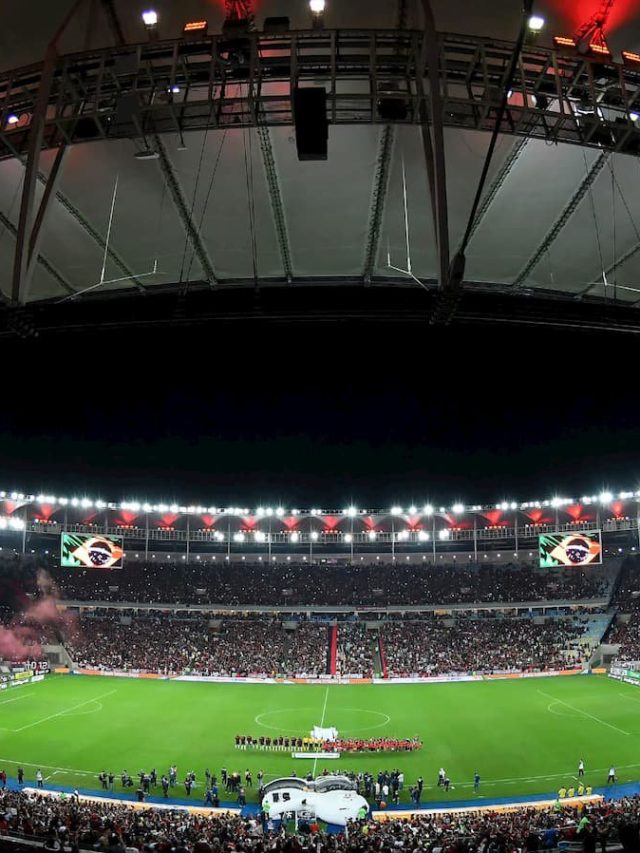Biggest Football Stadiums in the World
Football stadiums, symbols of sports culture and communal pride, are architectural marvels designed to accommodate vast numbers of spectators. Among the largest and most impressive stadiums globally, each has a unique story and design philosophy. Today, we delve into the architecture of these biggest football stadiums in the world, focusing on their construction spans, architects, and extensive land areas.
1. Rungrado 1st of May Stadium, Pyongyang, North Korea
Opened on May 1, 1989, the Rungrado 1st of May Stadium is the supreme in the biggest football stadiums in the world. Designed by the architect Kim Jong-hui, this colossal venue covers approximately 20.7 hectares (51 acres). The stadium’s design features a bowl-shaped structure with 16 arches and a highly distinctive roof, which gives it an amphitheatre-like appearance. The design emphasizes functionality and mass seating, accommodating around 150,000 spectators. Rungrado 1st of May Stadium’s enormous capacity is achieved through a series of tiered seating areas and a broad, open design.
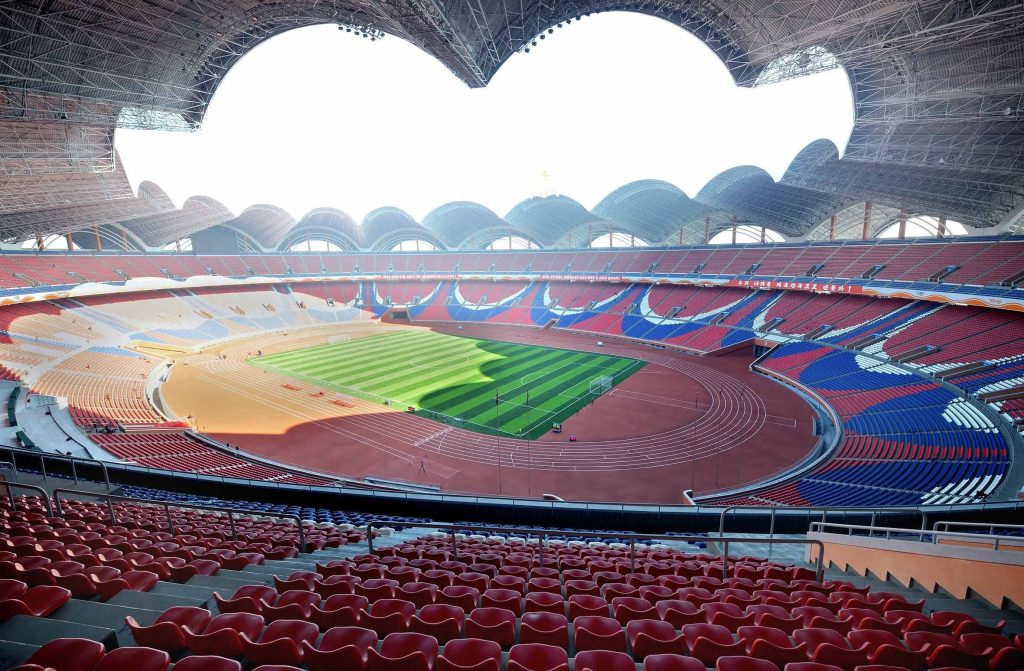
2. Michigan Stadium, Ann Arbor, USA
Known as ‘The Big House,’ Michigan Stadium was constructed in 1926-27, with significant expansions over the years. The architect, Bernard L Green of Osborne Engineering, designed this iconic stadium, which covers a vast area of approximately 17 hectares (42 acres). The stadium’s design reflects early 20th-century American football architecture, with a horseshoe shape that maximizes sightlines and seating. Currently, Michigan Stadium boasts a capacity of around 115,000, making it the second among the biggest football stadiums in the world. The structure’s design incorporates a high degree of functionality, including wide concourses and a steep bowl to enhance spectator views.
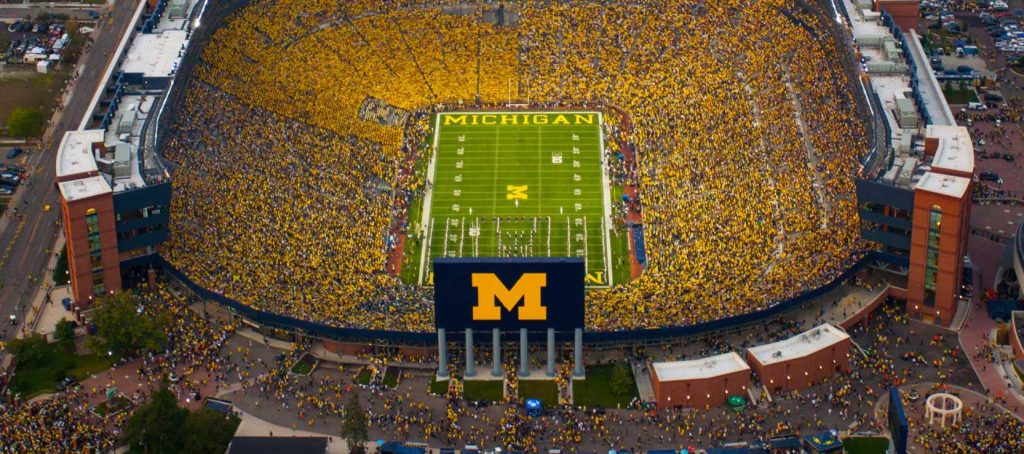
3. Melbourne Cricket Ground, Melbourne, Australia
The Melbourne Cricket Ground (MCG) has been a prominent sports venue since its initial construction in 1853, with significant renovations and expansions completed in 2009. The design, attributed to various architects over time (most recently firm, HOK), covers approximately 16 hectares (40 acres). Melbourne Cricket Ground features a traditional oval shape, optimized for cricket but also versatile for football and other sports. Its iconic structure includes a large open concourse and a distinctive light tower system. The stadium’s renovation incorporated modern materials and technologies while preserving its historical essence, accommodating around 100,000 spectators.
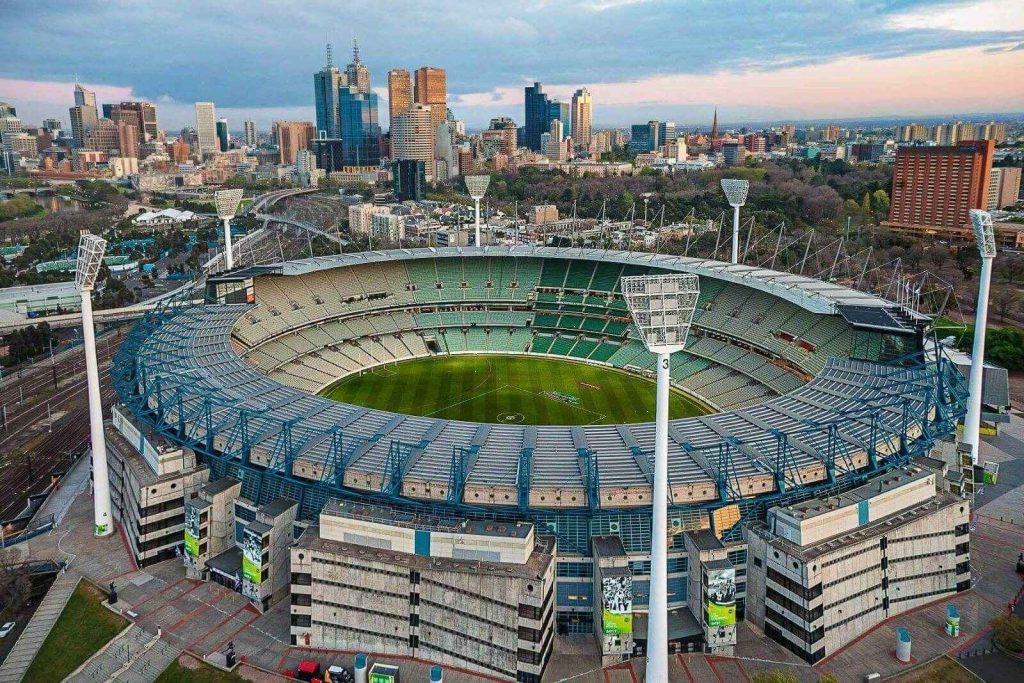
4. Camp Nou, Barcelona, Spain
Camp Nou, home to FC Barcelona, was constructed between 1954 and 1957, with subsequent renovations. The original design was by the architects Francesc Mitjans and Josep Soteras, with the project expanding under various architects. Spanning about 15 hectares (37 acres), Camp Nou is renowned for its immense seating bowl, which provides unobstructed views of the pitch. Its design includes a multi-tiered seating arrangement and a comprehensive facade that enhances both aesthetics and functionality. With a current capacity of around 100,500, Camp Nou stands as a testament to modern football stadium design. The fourth biggest football stadium in the world is currently being renovated to increase the seating capacity and will overtake the Michigan Stadium

5. FNB Stadium, Johannesburg, South Africa
Commonly known as Soccer City, the FNB Stadium was built between 1986 and 1989, with a major renovation completed for the 2010 FIFA World Cup. The architectural firm Boogertman + Partners led the redesign, creating a stadium that covers approximately 13.5 hectares (33 acres). The design is notable for its striking ‘calabash’ shape, inspired by traditional African cooking pots. This unique form incorporates a modern approach to seating and viewing, with a capacity of around 94,736. The FNB Stadium’s exterior is adorned with a vibrant pattern of lights, symbolizing its cultural significance.
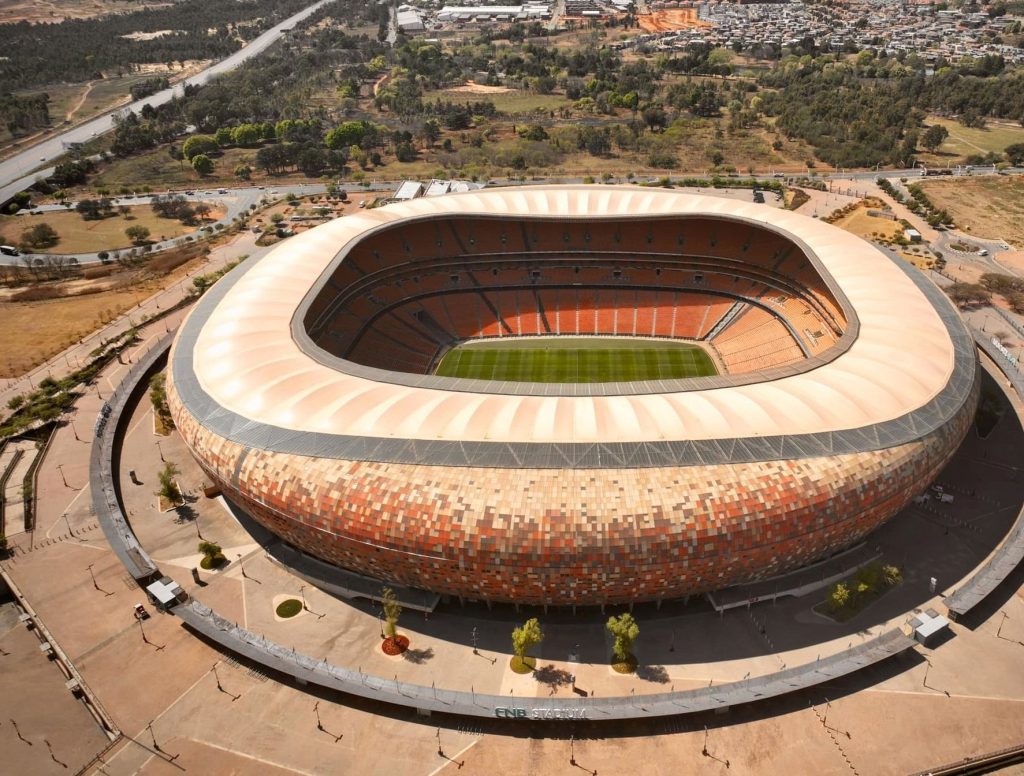
6. Wembley Stadium, London, UK
The original Wembley Stadium, completed in 1923, was replaced by a new structure completed in 2007. Designed by the architectural firm Foster and Partners, the new Wembley Stadium spans around 13 hectares (32 acres). It is famous for its iconic arch, which rises 133 meters above the ground and supports the roof structure. The design focuses on modern aesthetics and functionality, with a capacity of approximately 90,000. Wembley Stadium’s sweeping curves and transparent roof contribute to a contemporary look while maintaining the historic significance of the original Wembley.
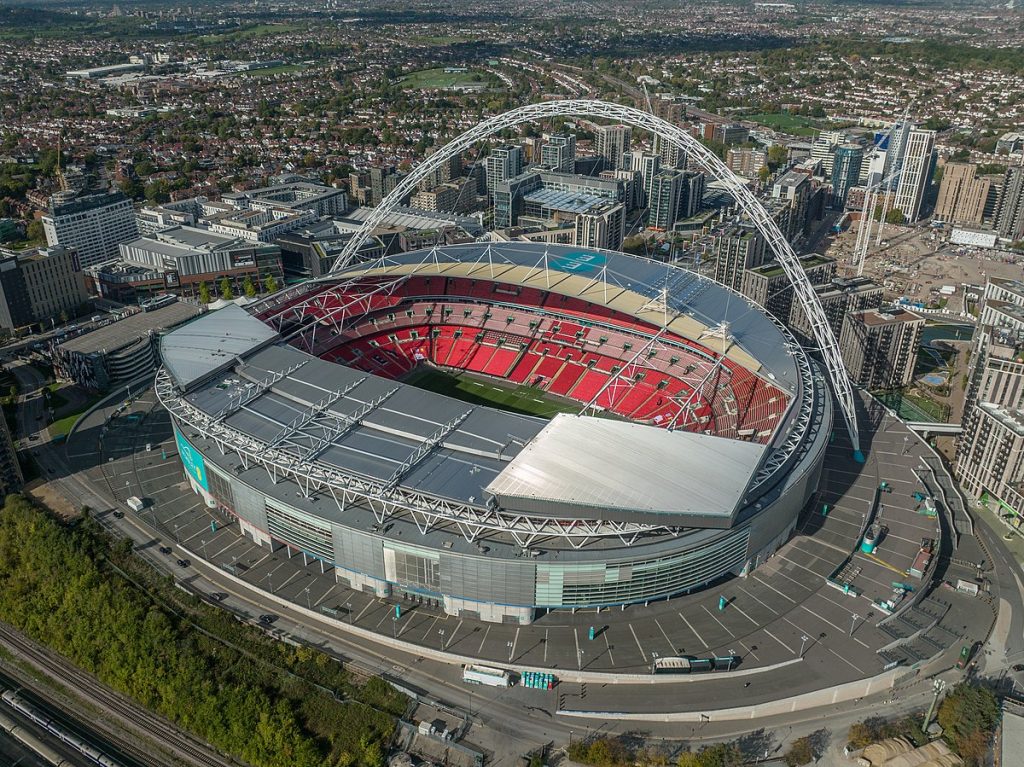
7. Rose Bowl, Pasadena, USA
Constructed between 1921 and 1922, the Rose Bowl’s design was led by architect Myron Hunt. Covering approximately 13 hectares (32 acres), this stadium is renowned for its distinctive bowl shape and classic architectural style. The Rose Bowl has undergone numerous renovations over the decades, maintaining its role as a premier sports venue. The structure’s design emphasizes a wide, open seating area that provides excellent sightlines for spectators. With a capacity of around 96,400, it is the seventh biggest football stadium in the world.
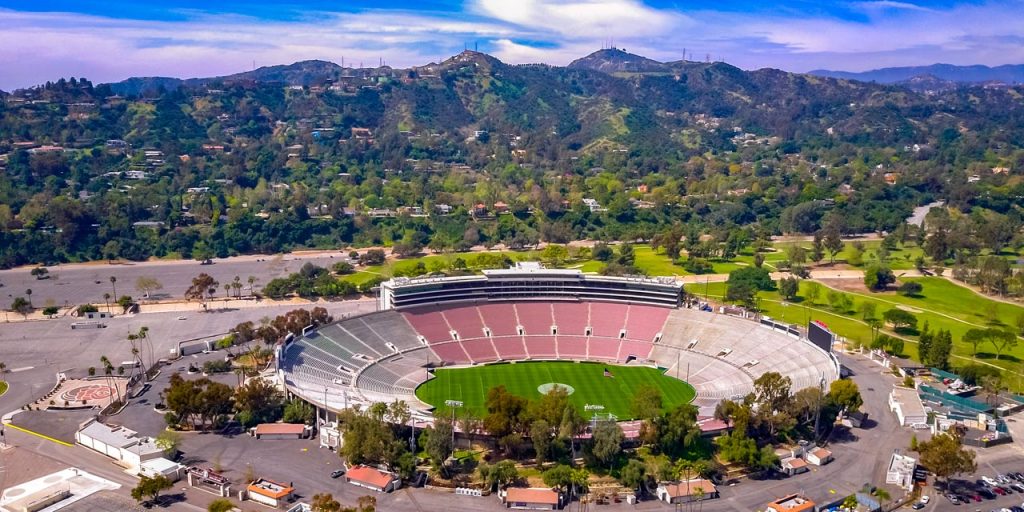
8. Estadio Azteca, Mexico City, Mexico
Opened in 1966, Estadio Azteca was designed by architects Pedro Ramírez Vázquez and Rafael Mijares Alcérreca. Covering around 12 hectares (29 acres), it is renowned for its unique circular design and towering seating areas. The stadium has hosted two FIFA World Cup finals, underscoring its significance in international football. The design features a steep, tiered seating arrangement that enhances the viewing experience for over 87,523 spectators. Its modern amenities and impressive scale make it a landmark in stadium architecture.
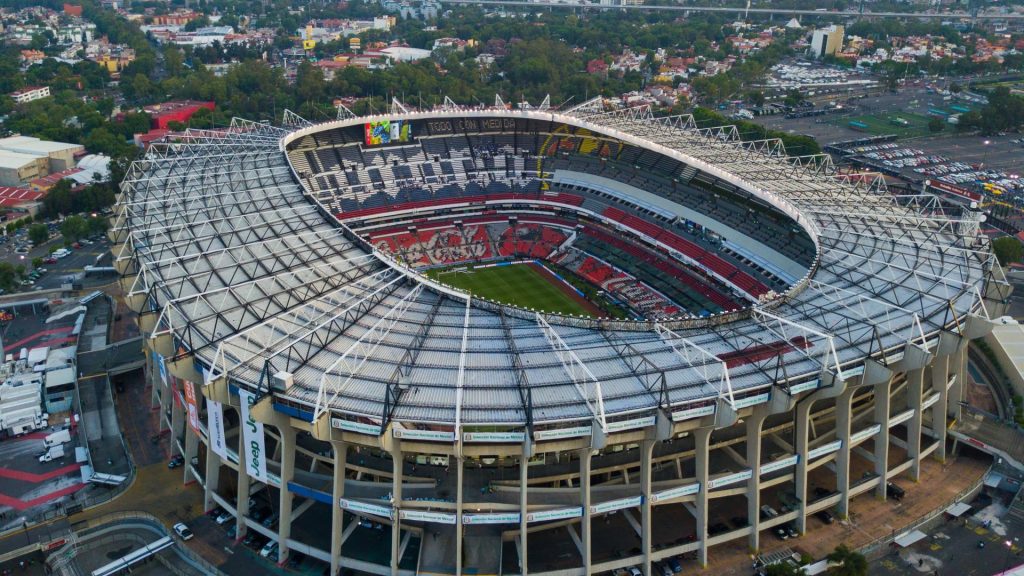
9. Bukit Jalil National Stadium, Kuala Lumpur, Malaysia
The Bukit Jalil National Stadium was constructed between 1992 and 1998, with a design led by the architectural firm CPG Consultants. Spanning approximately 12 hectares (29 acres), the stadium features a distinctive oval shape and a retractable roof. Bukit Jail National Stadium’s design incorporates modern materials and technologies to accommodate around 90,000 spectators. The stadium’s structure is characterized by its spacious, multi-tiered seating and comprehensive facilities, making the ninth biggest football stadium in the world a central venue for major sports events in Malaysia.
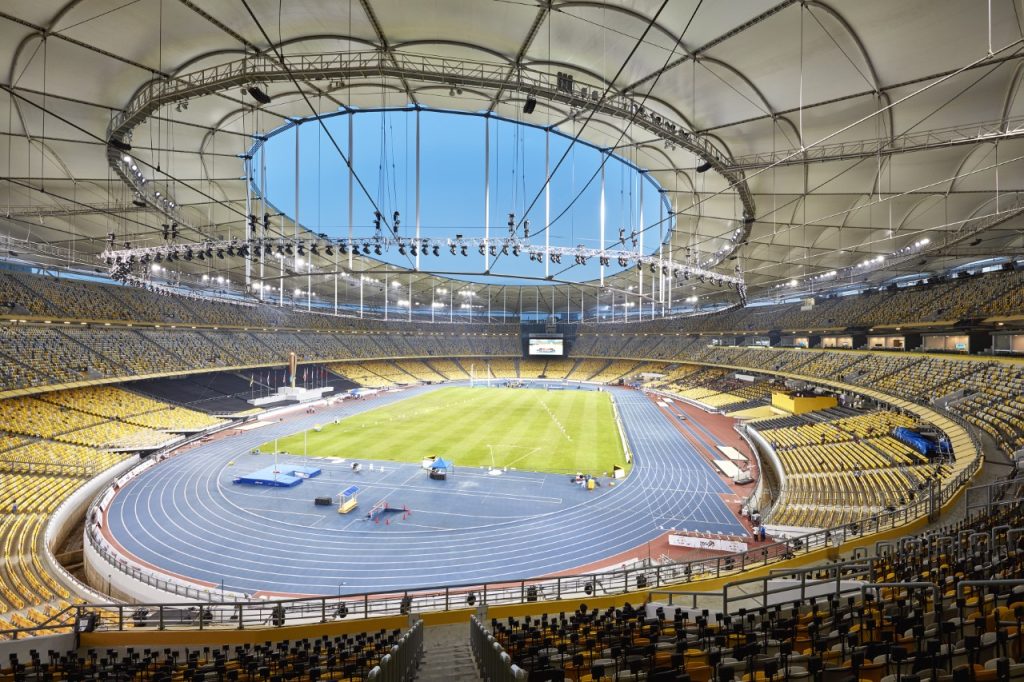
10. Borg El Arab Stadium, Alexandria, Egypt
Completed in 2006, the Borg El Arab Stadium was designed by the architectural firm Dar Al-Handasah. Covering approximately 11 hectares (26 acres), the stadium features a contemporary design with a striking facade and a large seating bowl. Its capacity of around 86,000 makes it one of the largest stadiums in Africa. The Borg El Arab Stadium’s design emphasizes both aesthetic appeal and functionality, incorporating modern amenities and a large playing field.
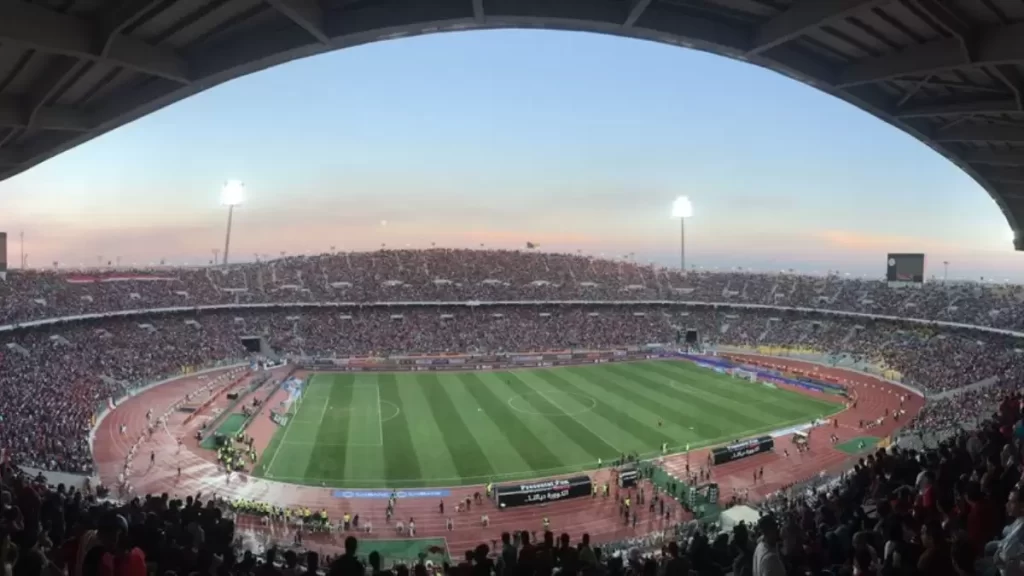
Image Courtesy – World Cup


